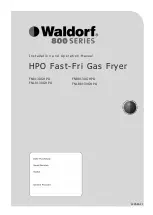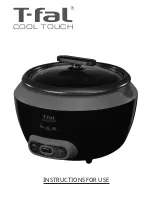
Page 24
Nothing is more important than air flow for the proper operation of a clothes dryer.
A dryer is a pump which draws make-up air from the out-of-doors, through the
heater, through the clothes and then forces the air through the exhaust duct back to
the out-of-doors. Just as in a fluid water pump, there must be a fluid air flow to the
inlet of the dryer, if there is to be the proper fluid air flow out of the exhaust duct.
In summary, there must be the proper size out-of-doors inlet air opening and an
exhaust duct, size and length of which allows flow through the dryer with no more
than 0.3 inches water column (.8 mbar) static pressure in the exhaust duct.
In some instances, special fans are required to supply make-up air, and/or booster
exhaust fans are required.
FOR BEST DRYING:
1.
Exhaust duct maximum length 14 feet (5 mm) of straight duct and
maximum of two 90° bends.
2.
Use 45° and 30° elbows wherever possible.
3.
Exhaust each dryer separately.
4.
Do not install wire mesh or other restrictions in the exhaust duct.
5.
Use clean-outs in the exhaust duct and clean periodically when needed.
6.
Never exceed 0.3 inches water column (.8 mbar) static pressure in the
exhaust duct.
7.
Inside surface of the duct must be smooth.
8.
Recommend pop rivets for duct assembly.
FOR BEST DRYING:
1.
Make-up air from outside the building may enter the enclosure from the
top or side walls. See Suggested Minimum Dryer Make-up Air
Requirements on page 20.
2.
Use barometric shutters in the inlet air opening to control air when dryers
are not running.
Other Recommendations
To assure compliance, consult local building code requirements.
Troubleshooting
Hot dryer surfaces, scorched clothes, slow drying, lint accumulations, or air switch
malfunction are indicators of exhaust duct and/or make-up air problems.
Exhaust and Venting
DRYER AIR FLOW
INSTALLATION
EXHAUST
DUCT
MAKE-UP AIR
OTHER
RECOMMENDATIONS
TROUBLESHOOTING
















































